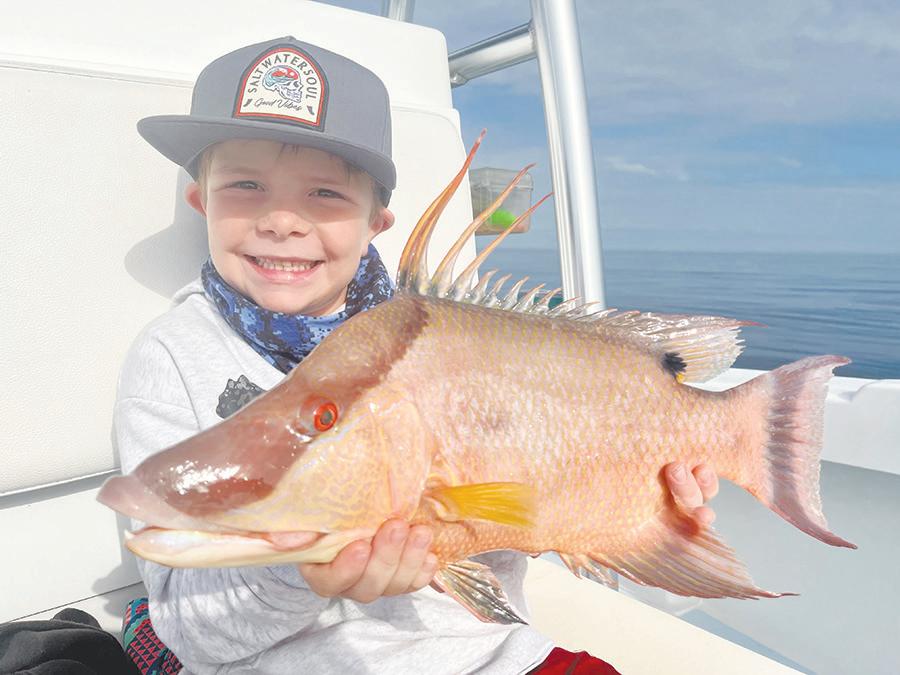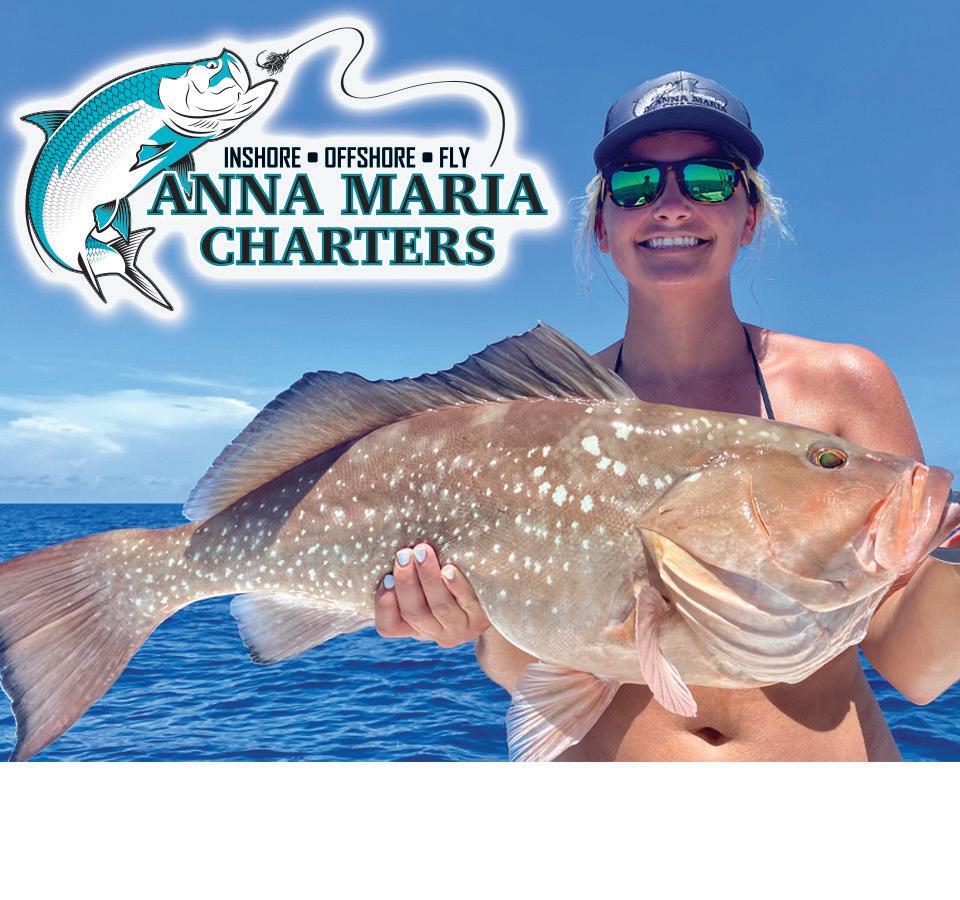
2 minute read
Hogfish plentiful locally
CAPT. DAVE WHITE
We’ve had a few really nice days this past week and were happy to take advantage of it.
We here at Anna Maria Charters spent the majority of the week on the ledges and nearshore structure targeting hogfish. Hogfish, commonly referred to as hog snapper, aren’t actually a snapper at all. They are in the wrasse family. They share this family with the small cleaner wrasse seen cleaning larger species like Goliath grouper, to the insanely large Napoleon wrasse. This makes their meat much different than snapper. Smaller grain and no blood. Mixed in while hog fishing, we also caught a ton of Key West grunts, mangrove snapper, triggerfish, lane snapper and the occasional gag grouper - all very tasty animals that are easy to fill the box with if you’re at all a very proficient angler. Inshore, we’re targeting pompano, sheepshead, snook, black drum and redfish. Shrimp and pilchards are both staples in our everyday routine. Hopefully we see more weather like last week in the near future!

CAPT. RICK GRASSETT
Trout and redfish should be good shallow-water options this month. You’ll find trout on deep grass flats. I like flats that have a good mix of grass and sand and good tidal flow. Flats that are close to passes are often good choices since water temperatures may be warmer there. Following fronts, silted-up water will cover deep grass flats close to passes, often affecting fishing in those areas. Other good grass flats may be on points or around bars. I like to drift and cast ahead of my drift with CAL jigs and a variety of plastic tails, DOA Deadly Combos or weighted flies on sink-tip fly lines to locate trout. Once you’ve located them you can shorten your drift or anchor on them.
In addition to trout, you may also find blues, Spanish mackerel, flounder or pompano, depending on water temperature and conditions, on deep grass flats. The technique to find them is the same as for trout, although there may be other clues. Pompano may “skip” on the surface when you drift or run past them, giving their presence away. When that happens, set up a drift upwind of where you saw a pompano and cast ahead of your drift. Blues and Spanish mackerel may force bait out of the water or feed on the surface. You may need to add heavy fluorocarbon or wire when blues and mackerel are mixed with trout on deep grass flats.
Fishing docks is another good option this time of year, especially when the tide is low. You might find reds, sheepshead or flounder under docks. I like docks that are deep (3’ or more) and have a good tidal flow. Fish the end of long piers to find the deepest water. Also, look for big boats moored on docks or on boat lifts, which is also an indication of deeper water. Older docks with lots of barnacle and oyster growth usually hold more baitfish and predators. I like CAL jigs with shad tails, grubs or jerk worms or weighted flies fished on sink-tip fly lines when fishing docks. Be sure to let your jig or fly get down close to the bottom.
There may be some action in the coastal Gulf by the end of the month with Spanish mackerel and cobia. When the water warms to the high 60s to low 70s, these fish will move into our area from the south as they migrate north. Look for Spanish mackerel on the surface or in passes. Cobia may be swimming on the surface, around buoys, channel markers and crab trap floats or over structure. Tripletail may










